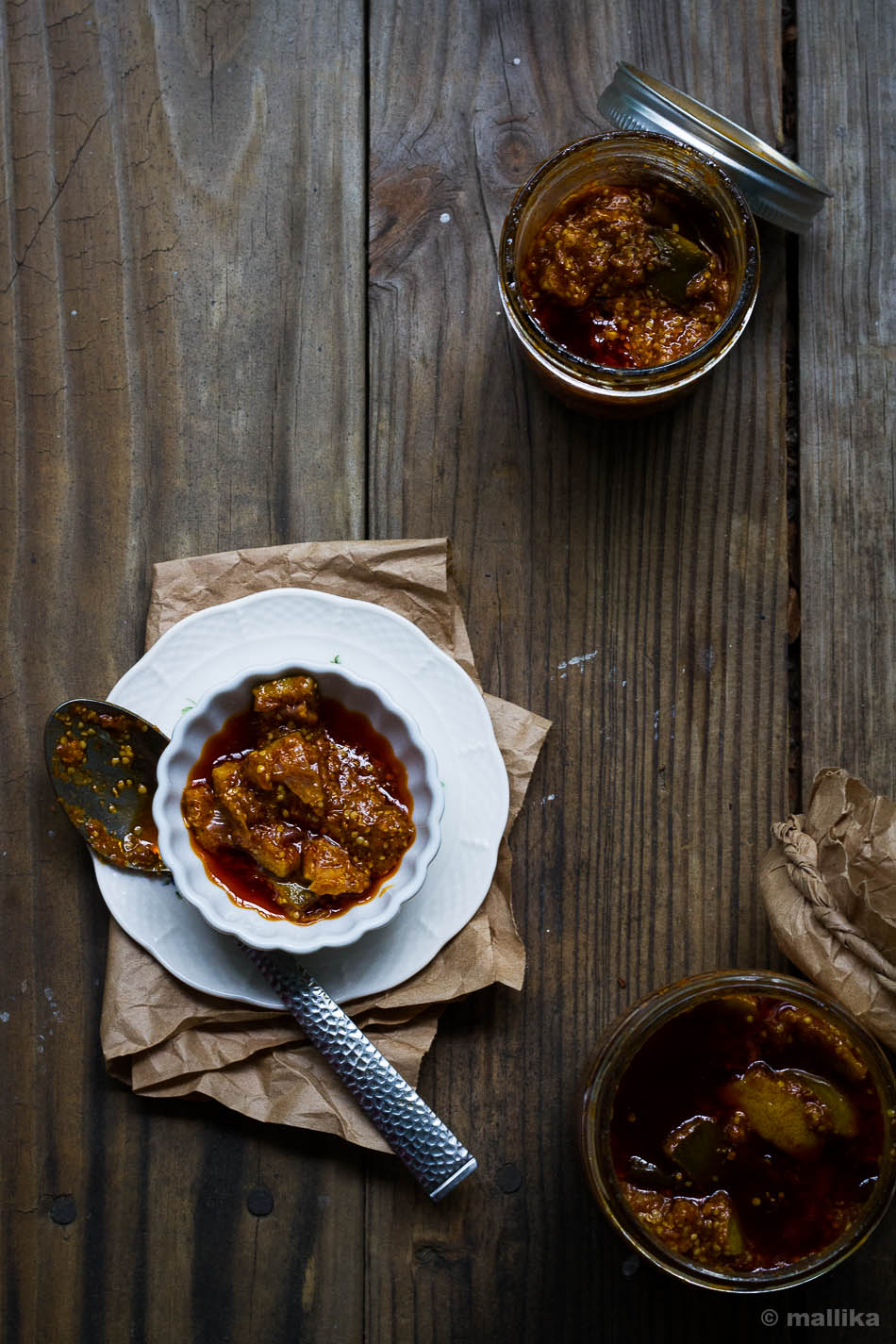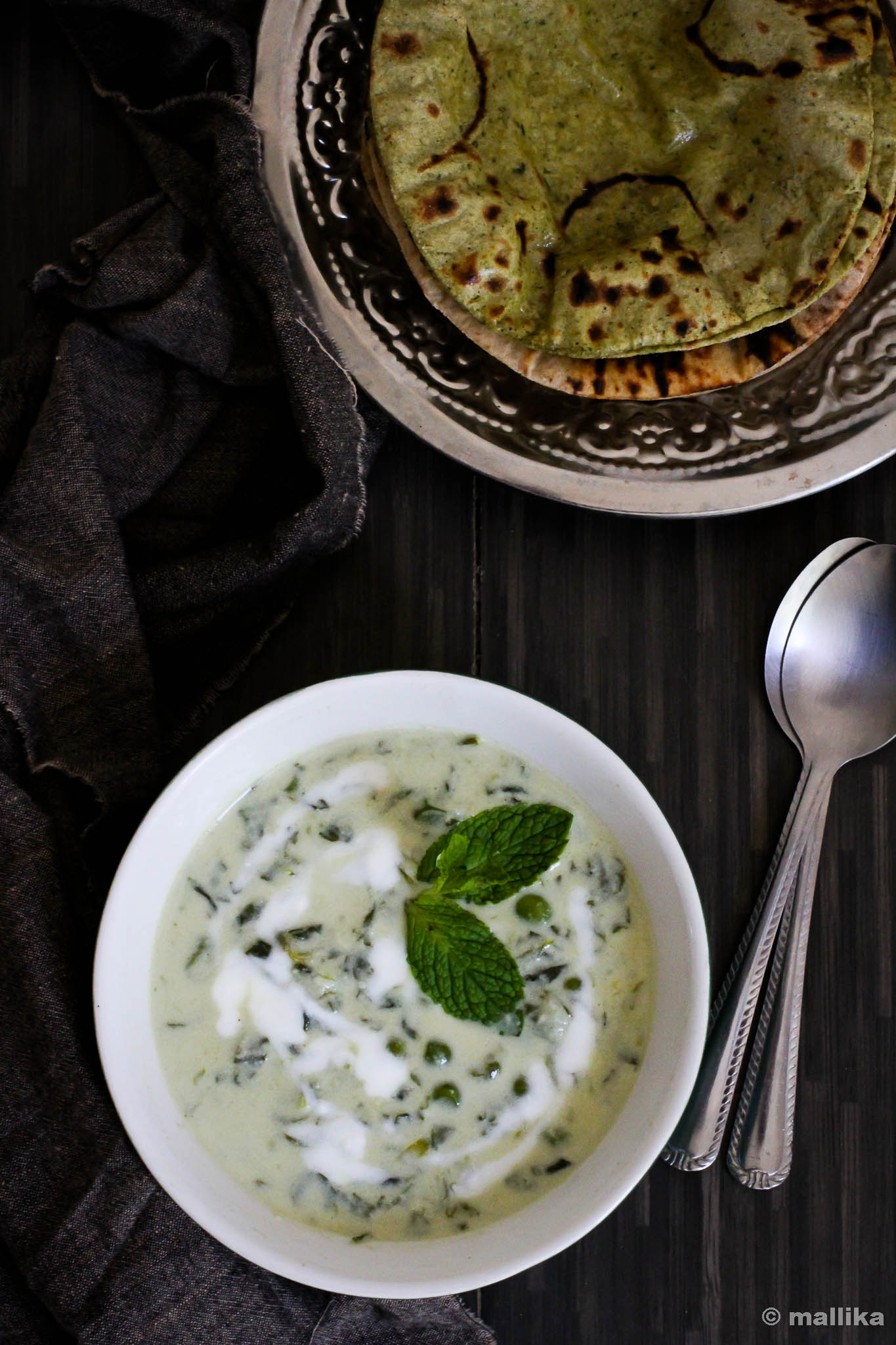Homely, rustic and vastly organic. This is the kind of comfort food we grew up eating, often made from easily available farm grown wilds and greens fetched from aunt's estate, grandma's gardens and at times home-grown. I made this dish to bring back fond memories of a part of my childhood spent in the serene small town where convenience to such wild greens was in sheer abundance and was often subjected to lack of appreciation. And so much more to apologize myself for hating this dish through my growing up years. I remember disliking these greens in particular, eating them with puckered brows every time they made an appearance on the table, because my mom never spared cooking even those thick stalks of these creepers every time she lay her hands on them. I have seen dad relish them with relentless penchant. They were probably their favourites, rest assured they were not mine.
But now, it seems like ages since I had a chance to taste BasaLe Soppu or commonly called Malabar Spinach. The Malabar Spinach, also known as Red Vine Spinach grows abundantly in humid weather conditions. It has wide heart shaped leaves with soft-stems that grow into creepers. Despite my dislike for them through my growing up years, I missed them ever since I moved to Bangalore. I have never seen them around here where we live. If someone offered me this dish now, I would probably tag them 'exotic'. As kids, we were told these are healthy and have a great source of nutrition. But it's only now that I have learnt to appreciate those thick stalk-y chews of these wild creepers.
A while ago, I grabbed a budding Malabar Spinach plant from a nursery on our trip back home. A handful of budding leaves on a stalk is all it stood with. Before I could let them grow and spread their wings, my impatience to revive my childhood memories with this dish took control over me and I went on a chopping spree. What remains now is a single barren short stalk that is making its way to climbing, twining, and creeping along another stem. As I patiently watch it grow to nurture new leaves, which will probably take a couple of months, I have a strong sense of excitement of using these home grown leaves in this home styled traditional recipe today. I hope you enjoy them as much as we did.
But now, it seems like ages since I had a chance to taste BasaLe Soppu or commonly called Malabar Spinach. The Malabar Spinach, also known as Red Vine Spinach grows abundantly in humid weather conditions. It has wide heart shaped leaves with soft-stems that grow into creepers. Despite my dislike for them through my growing up years, I missed them ever since I moved to Bangalore. I have never seen them around here where we live. If someone offered me this dish now, I would probably tag them 'exotic'. As kids, we were told these are healthy and have a great source of nutrition. But it's only now that I have learnt to appreciate those thick stalk-y chews of these wild creepers.

(Pictured above, a lone creeper of Kempu BasaLe Soppu in midst of home-grown mint leaves)
A while ago, I grabbed a budding Malabar Spinach plant from a nursery on our trip back home. A handful of budding leaves on a stalk is all it stood with. Before I could let them grow and spread their wings, my impatience to revive my childhood memories with this dish took control over me and I went on a chopping spree. What remains now is a single barren short stalk that is making its way to climbing, twining, and creeping along another stem. As I patiently watch it grow to nurture new leaves, which will probably take a couple of months, I have a strong sense of excitement of using these home grown leaves in this home styled traditional recipe today. I hope you enjoy them as much as we did.
Basale HuLi
INGREDIENTS:
1/2 cup Basale soppu (Malabar spinach / Red Vine Spinach)
1/2 cup togaribeLe / tuvar dal (pigeon peas)
1/2 tsp. turmeric powder
3 tbsp. kottambari beeja (coriander seeds)
10 + 2 Byadagi red chillies
1 tsp. hing (asafoetida)
1 tsp. jeerige (cumin seeds)
1 tbsp. kadale bele (split bengal gram)
1/2 tsp. menthya (fenugreek seeds)
1/2 cup grated raw coconut
Lemon sized tamarind
1 tsp. coconut oil
1 tsp. jaggery
1 tsp. mustard seeds
A sprig of curry leaves
Salt to taste
DIRECTIONS:
Wash and cook the togaribeLe/pigeon peas in pressure cooker along with turmeric till they are soft and mushy.
In a thick bottomed pan, dry-roast the coriander seeds, cumin seeds, methi seeds, split bengal gram, hing with about 7-10 red chillies till they are fragrant. Remove from heat and allow them to cool. Grind them to a fine paste with a handful of grated fresh coconut and tamarind. Set aside.
Wash the Basale leaves, along with their tender stalks. Chop them into small pieces. In a wide mouthed pan, cook the leaves and stalk in some water. As the leaves wilt and the stalks are cooked, add the cooked dal to this along with the freshly ground paste, a cup of water and bring to a rolling boil. Add a tsp. of grated jaggery along with salt to taste. Adjust the consistency of this huLi by adding more water to your taste and preference.
For the seasoning, heat a tsp of coconut oil in a wok. Fry the mustard seeds till they splutter. Add in torn curry leaves, hing and 2 broken red chillies. Fry for 30 sec and turn off the flame. Add this seasoning to the prepared huLi. Serve hot with steaming hot rice.





Oh so comforting!! Loved reading about your food memories :) So nostalgic!
ReplyDeleteWowww.... Looks so delicious and awesome.. your photography is beautiful.. thanks for sharing!!
ReplyDeleteWhat pretty pictues! I love spinach. I use more of Delhi palak and have not used red spinach much. This dish sounds yum!
ReplyDeleteGorgeous pics! and mouthwatering recipe... How come I've never heard of Malabar spinach?!?! The spinach which we usually love to eat in Kerala is actually amaranth - both red and green... (i think)... now I'm totally confused about my understanding of the greens that we usually eat...
ReplyDeleteSarah, I know what you are saying. Amaranth is different from BasaLe greens. We use Amaranth a lot in our cooking. Amaranth has chewy leaves even after cooking while these leaves become much softer like spinach after they are cooked. These have thicker stalks with more water content in them.
DeleteAwesome clicks!
ReplyDeleteHow I miss your delicious food sissy....Can only follow them and try them on my own now :(
looks delicious
ReplyDeleteLOVE every pic!!!
ReplyDeleteLove the color combinations used in the photos..just loved the pics..the huli looks delicious too..my mom uses this green a lot, we call it bacchali aaku in telugu
ReplyDeleteNice recipe, and your pics are always beautiful..
ReplyDeleteBeautiful clicks ... I love malabar style cooking... I loved reading ur blog... It has all authentic recipes :)
ReplyDeletevery nice thank you for the information
ReplyDeleteLooks tempting,love the mood of the pics
ReplyDeleteI tried it. Great recipe. Thanks for bringing us this appealing recipe, both look-wise and taste-wise!
ReplyDeleteLooks awesome.....and yummy.Plannin to try this now
ReplyDelete